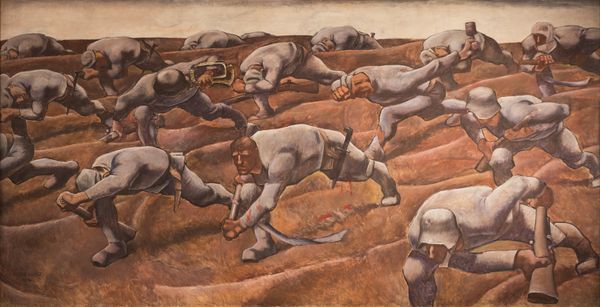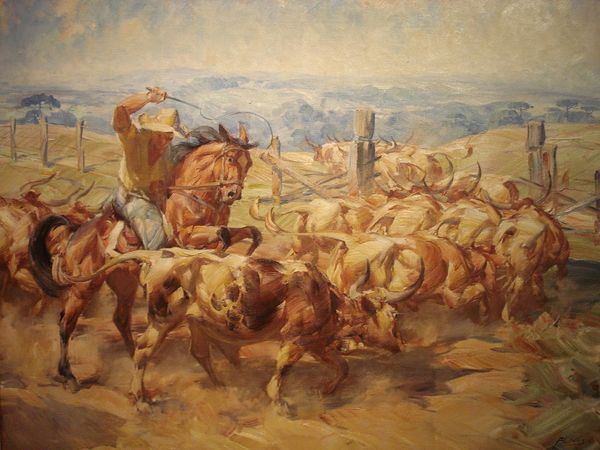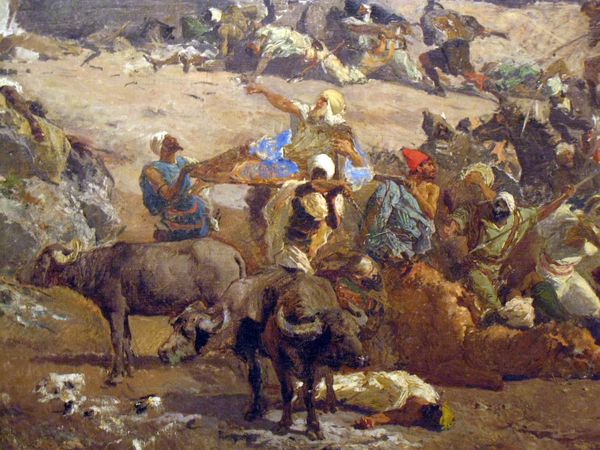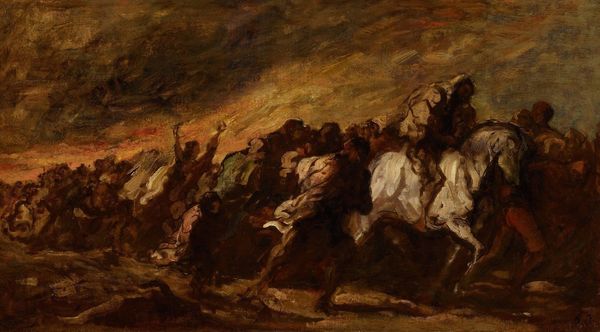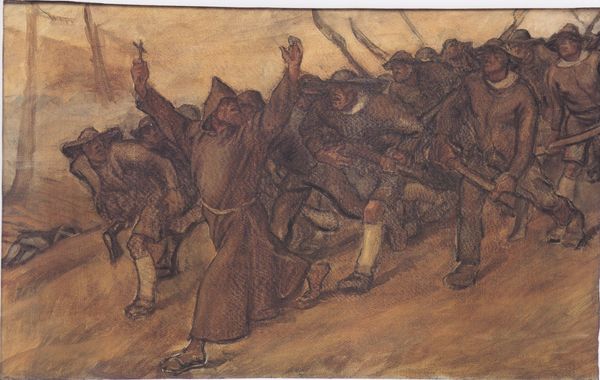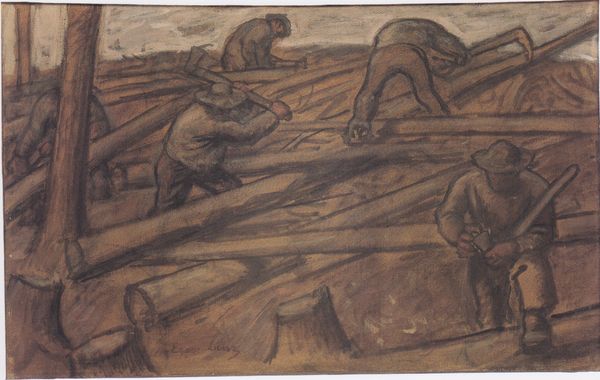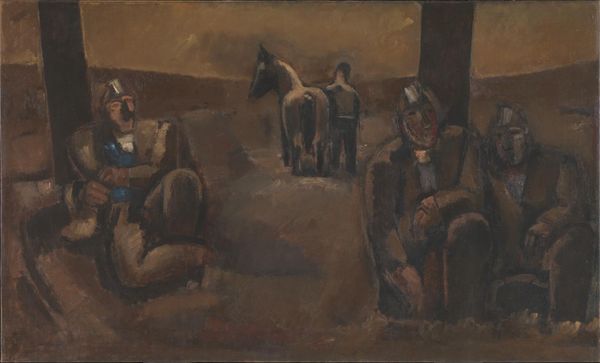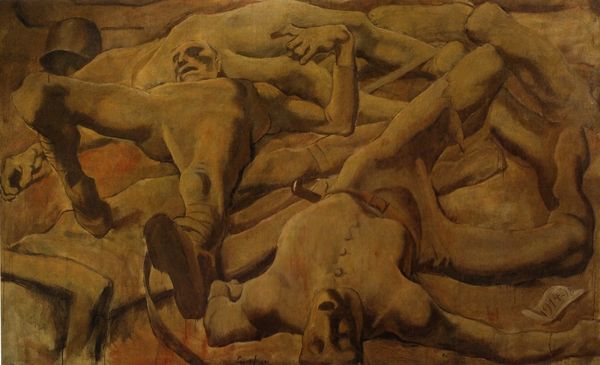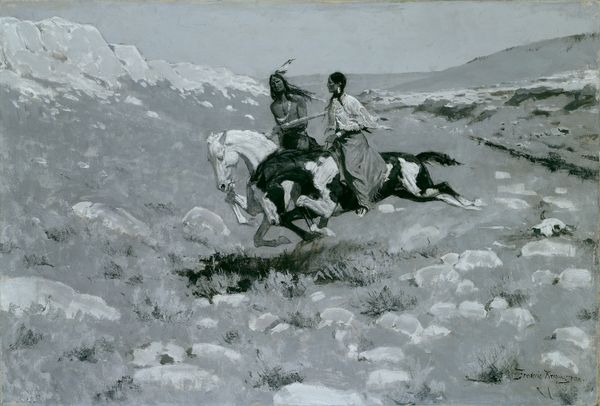
painting, oil-paint
#
narrative-art
#
painting
#
oil-paint
#
landscape
#
german-expressionism
#
figuration
#
oil painting
#
expressionism
#
history-painting
#
modernism
#
realism
Copyright: Public domain
Editor: This is "Nordfrankreich," created by Albin Egger-Lienz in 1917 using oil paint. Looking at it, the rows of figures give me the sense of endless toil and uniformity. What do you see in this piece? Curator: This work screams of labor, both the physical exertion depicted and the artist's own process. The visible brushstrokes, the almost monochromatic palette – these weren’t accidental. They underscore the gritty reality of war as a dehumanizing machine. Editor: Dehumanizing, how so? Curator: Well, look at the figures. They're toiling in the earth, reduced to their labor, their individuality almost erased by the uniform colour and the repetitive motion. Even the way the oil paint is applied – thick, almost crude – speaks to a brute physicality. What material conditions do you think informed the painting? Editor: You mean like the availability of materials during wartime? Perhaps he was limited to earth-toned pigments because of scarcity? Curator: Precisely! Also consider the context. 1917 – the height of World War I. The painting isn't just depicting labor; it's depicting forced labor, war labor. The artist's choice of oil paint itself connects it to a longer tradition of depicting historical scenes of hardship but within an expressionistic lens. Editor: So the materials and methods highlight the historical realities of the piece. Curator: Exactly. And that connects the "high art" of painting to the daily realities of wartime experience, the trenches, the manufacturing – the labour which the war depended on. Editor: I never thought about it in terms of available materials, but now I see how those practical constraints shaped the entire feeling of the piece. Curator: Yes, considering the production and consumption of materials lets us reconsider the artwork as evidence and a critical statement.
Comments
No comments
Be the first to comment and join the conversation on the ultimate creative platform.
